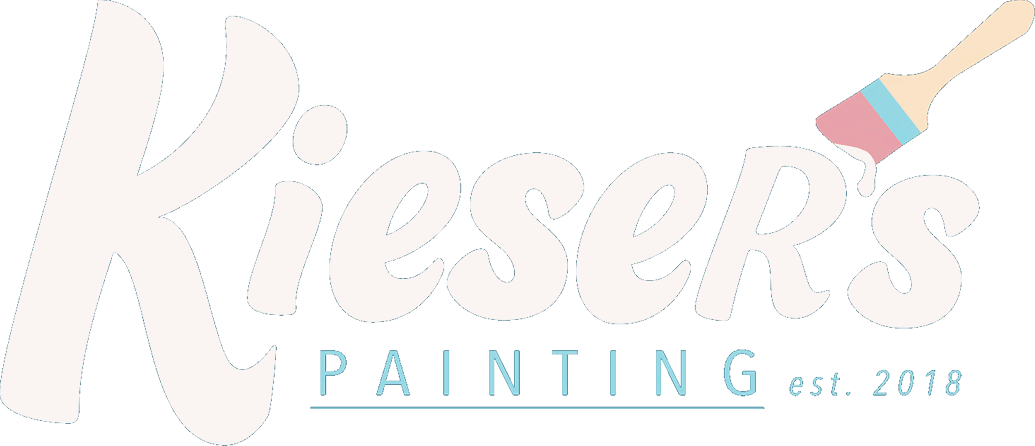Embarking on a cabinet painting project is a fantastic way to breathe new life into your kitchen or bathroom, transforming the space with a fresh and vibrant aesthetic. However, like any home improvement venture, cabinet painting comes with challenges. To ensure a smooth and successful transformation, it’s crucial to be aware of common pitfalls that DIY enthusiasts and even some professionals might encounter.
This blog will explore the 9 most common mistakes to avoid when painting cabinets. From issues related to preparation and application to environmental considerations, we’ll equip you with insights, ensuring that your cabinet painting project looks fantastic.
1. Skipping the Cleaning and Sanding Steps
One prevalent mistake is overlooking the crucial steps of cleaning and sanding. Failing to prepare the cabinets adequately can lead to paint adhesion issues and a less durable finish.
Solution: Invest time in thorough cleaning using a degreaser to eliminate accumulated grime. Follow this with meticulous sanding to create a smooth canvas for the paint. This essential duo sets the foundation for optimal adhesion and a longer-lasting, professional-looking result.
2. Underestimating the Importance of Primer
Another misstep is underestimating the significance of using a primer. Some DIYers assume it’s unnecessary, but primer is the unsung hero for a resilient and even paint job.
Solution: Select a high-quality primer compatible with your cabinet material. This provides a suitable surface for the paint and enhances adhesion while preventing stains or wood tannins from compromising the final finish.
3. Ignoring Proper Ventilation
Poor ventilation is a recipe for slow drying times, uneven finishes, and persistent paint odors—a common oversight in the cabinet painting process.
Solution: Prioritize proper ventilation by opening windows and utilizing fans. This expedites the drying process and helps disperse fumes, creating an environment conducive to a smoother and more professional-looking paint job.
4. Rushing the Drying Process
Impatience during drying can result in many issues, including smudges, dents, or uneven finishes.
Solution: Adhere strictly to recommended drying times between coats. Avoid the temptation to rush the process, as doing so can compromise the quality of the finish. Consider using drying accelerators or fans to expedite drying times within a controlled and optimal environment.
5. Overlooking Quality Brushes and Rollers
Choosing low-quality brushes or rollers is a common mistake that often leads to visible brush marks, streaks, or an uneven finish.
Solution: Invest in premium brushes and rollers specifically designed for the type of paint you’re using. This investment ensures a smoother application, minimizing imperfections and contributing to a more professional appearance.
6. Neglecting Color Selection and Testing
Picking a paint color without prior testing is a pitfall that can result in an unpleasant surprise once applied to all the cabinets.
Solution: Always test the chosen paint color in a small, inconspicuous area before committing to the project. This allows you to assess how the color interacts with your lighting conditions, avoiding potential disappointments.
7. Disregarding Professional Assistance
The temptation to embark on a complex cabinet painting project without professional assistance can lead to subpar results.
Solution: Contemplate hiring professional cabinet painting services for intricate cabinet designs or if uncertainty surrounds your skills. These experts bring invaluable expertise, ensuring a flawless finish, saving time, and mitigating potential frustrations.
8. Overlooking the Importance of Sealant
Many DIYers forget the final crucial step—applying a sealant. Neglecting this can leave your freshly painted cabinets vulnerable to moisture, scratches, and daily wear and tear.
Solution: After the paint has thoroughly dried, consider applying a clear polyurethane sealant. This protective layer acts as a shield, enhancing the durability of the paint and making your cabinets more resistant to damage. This extra step ensures the longevity and resilience of your beautifully painted cabinets.
9. Ignoring Environmental Factors
Not considering the environment where your cabinets are located can lead to premature wear and tear. Factors like high humidity, temperature fluctuations, and exposure to direct sunlight can impact the quality and longevity of your cabinet paint.
Solution: Evaluate the environment in which your cabinets reside. Choose paints that resist moisture if it’s a kitchen with high humidity. Opt for UV-resistant finishes in areas with ample sunlight to prevent color fading. Adapting your cabinet painting approach to environmental factors ensures a paint job that stands up to the conditions it faces.
Transform Your Cabinets the Right Way
Steering clear of these common mistakes can make your cabinet painting project seamless and triumphant. Kieser’s Painting offers expert cabinet painting services for those seeking professionalism, guaranteeing a transformative and high-quality finish for your kitchen or bathroom cabinets. Contact us at 402-866-8260 for a free estimate!

